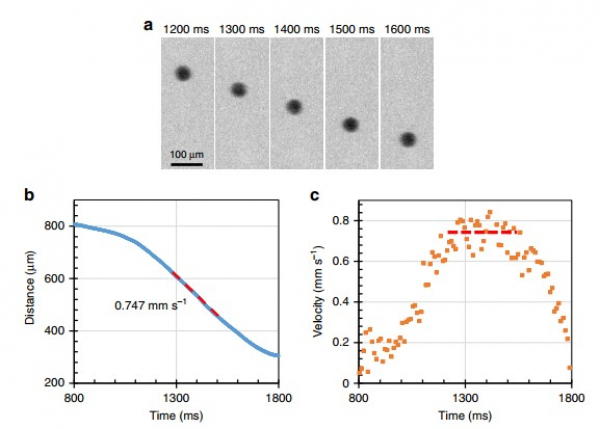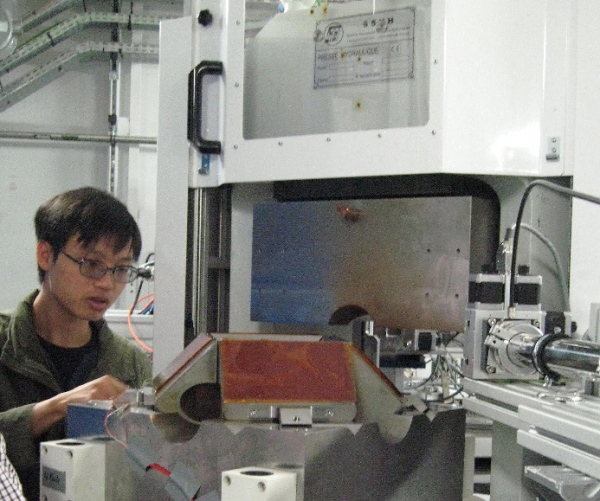An international research group held by Dr. Longjian Xie from the Okayama university (now postdoc at the Bavarian Research Institute of Experimental Geochemistry & Geophysics (BGI) of the University of Bayreuth) has succeeded for the first time to measure silicate melt viscosities, at the same pressure and temperature conditions of the Earth’s lower mantle, using SPring-8 and SOLEIL Synchrotrons facilities. The data obtained support the assumption that a bridgmanite-enriched rock layer was formed during the early history of the earth, during the crystallisation of the “magma ocean”, at a depth of around 1,000 kilometres (at the border of the upper mantle). The data also provides indications that this layer could have remained unchanged to this day. The researchers have presented their findings in the scientific journal Nature Communications.
To reach the extreme temperatures required to do these measurements, the scientists used a heating element they developed, based on a boron-doped diamond, an electrical conductor with a very high melting point. Consequently, they were able to examine samples in a multi-anvil press at pressures of up to 30 giga-pascals and at temperatures of almost 3,000 degrees Celsius – i.e. under conditions similar to those prevailing in the lower mantle of the early Earth. The samples were selected for their composition, similar to the main minerals present in the lower mantle. Using an ultra-fast camera (1000 frames/second), the melting processes taking place in the multi-anvil press were observed, and the viscosity of the molten material was measured by recording the falling path of a small rhenium sphere placed at the top of the sample (Fig. 1).

Figure 1: Experimental observation of the falling sphere on PSICHE beamline.
(a) Sequential radiographic images recorded at ~24 GPa and ~2873 K during the fall of a Re-sphere of ~65 μm diameter.
(b) Position of the sphere as a function of time. The sphere position was fitted by a Gaussian function in each X-ray radiographic image (blue symbol). The melt viscosity can be calculated from the terminal velocity (red dashed line).
(c) Velocity/time plot of the sphere, using a sampling time of 10 ms. The red dashed line is a best fit through the data points located on the "velocity plateau" corresponding to the terminal velocity.
The first successful experiments were conducted on PSICHE beamline (Fig. 2) and with the help of the ANATOMIX beamline team for high speed imaging. Thanks to pink beam imaging at low energy, the dataset benefits from a high contrast, essential for the accurate determination of the position of the Re sphere (see fig. 1), while the very high X-ray beam flux allows for high-speed images recording (1000 fr/s). Two beam time sessions, on PSICHE in addition to complementary experiments done at Spring-08 (beamline BL04B1) were needed to get enough data points.

Figure 2: Dr. Longjian Xie preparing an experiment on PSICHE beamline at the electron synchrotron SOLEIL in Saint Aubin near Paris
© Courtesy of Dr Longjian Xie
The data obtained allow for a better understanding of the mechanisms involved during the crystallisation of the Earth’s mantle from the primordial magmatic ocean. A fractional crystallisation and thus a chemical fractionation at a depth of around 1,000 kilometres is clearly indicated. "Our measurement data support the assumption that a rock layer containing a high proportion of the mineral bridgmanite was formed at this depth due to crystallization processes. This layer could be responsible for the high viscosity observed at this depth in previous geophysical investigations" explains Dr. Longjian Xie.
